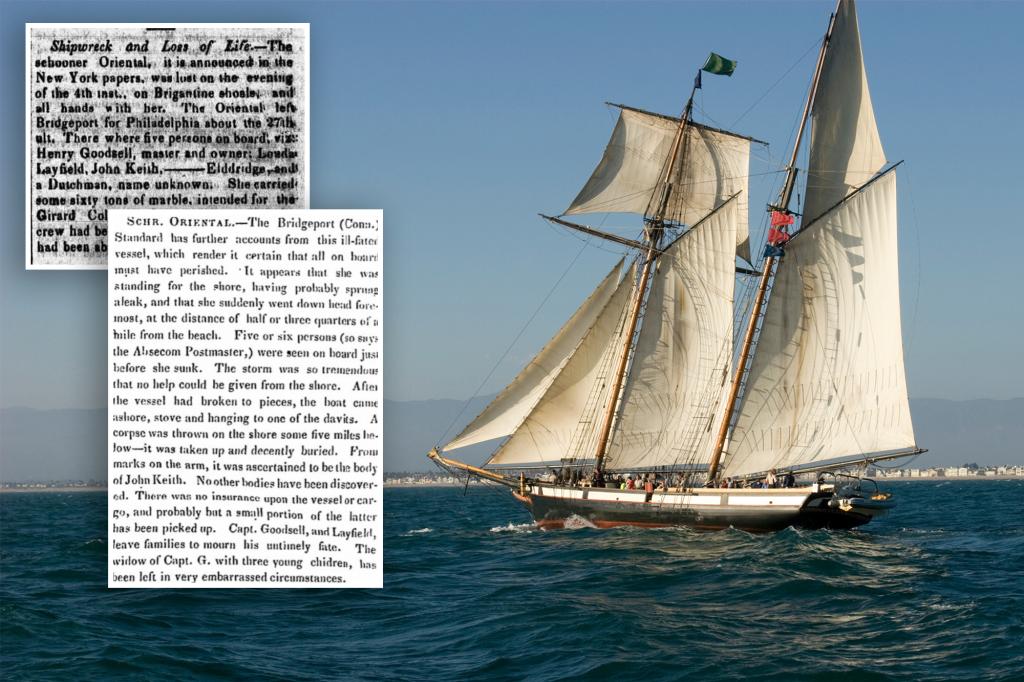Various bones that washed up on New Jersey beaches starting 30 years ago were finally determined to belong to the captain of a 19th-century shipwreck, officials revealed Wednesday.
The remains found on several south Jersey shorelines between 1995 and 2013 were connected to Henry Goodsell, the 29-year-old captain of the doomed schooner “Oriental,” according to the Ramapo College Investigative Genetic Genealogy Center
The incredible breakthrough was made thanks to a group of Ramapo College students who worked the cold case for nearly two years by tapping into DNA testing and combing through records that were hundreds of years old.
“The ability to bring answers to families — even generations later — shows how far science and dedication can take us,” New Jersey State Police Superintendent Patrick Callahan said in a statement.
Five crew members, including Goodsell, were sailing from Connecticut to Philadelphia to deliver marble to a yet-to-be-opened college preparatory boarding school in 1844 when the ship likely sprang a leak and submerged less than a mile from the coast of Brigantine Shoal, killing everyone aboard.
A skull – which was initially deemed a John Doe — first washed ashore in Longport in 1995 before more bones were discovered in Margate four years later – both towns in Atlantic County.
More bones were unearthed in 2013 in Ocean City in a different county, but despite the growing evidence, the typical methods of investigation couldn’t lead to an identification.
A decade later, state police tapped the Ramapo College IGG Center for help.
A genetics sample was sent in November 2023 to Intermountain Forensics, which then uploaded the DNA to different ancestry databases a few months later, Ramapo College said.
Ramapo undergrads and students part of the IGG Center certificate program then scoured through records, finding ancestry from the 1600s with genetic relatives who lived in a pair of Connecticut counties.
Students also looked into shipwrecks and found newspaper clips from two newspapers dated Dec. 20 and Dec. 24 of 1844 that described the sinking.
Only one body was recovered at the time of the ship’s demise, according to one of the old articles.
It was also reported that Goodsell was the captain who left behind a wife and three young children.
State police were finally handed the case back and collected a family reference sample from a great-great-grandchild of Goodsell in March. The following month, the identification was confirmed.
“Using modern genealogy testing to identify bone fragments from the 19th century is a powerful reminder of our unwavering commitment to resolving cases no matter how old,” Callahan said.
This is one of the oldest cold case identifications with the help of investigative genetic genealogy, the college said.
“Identifying human remains is one of the most solemn and challenging responsibilities law enforcement is charged with,” said Atlantic County Prosecutor’s Office Chief of County Detectives Patrick Snyder.
“Law enforcement works hard knowing that behind every case is a promise: that no one will be forgotten, and that we will pursue the truth until families have the answers they deserve.”
Read the full article here
